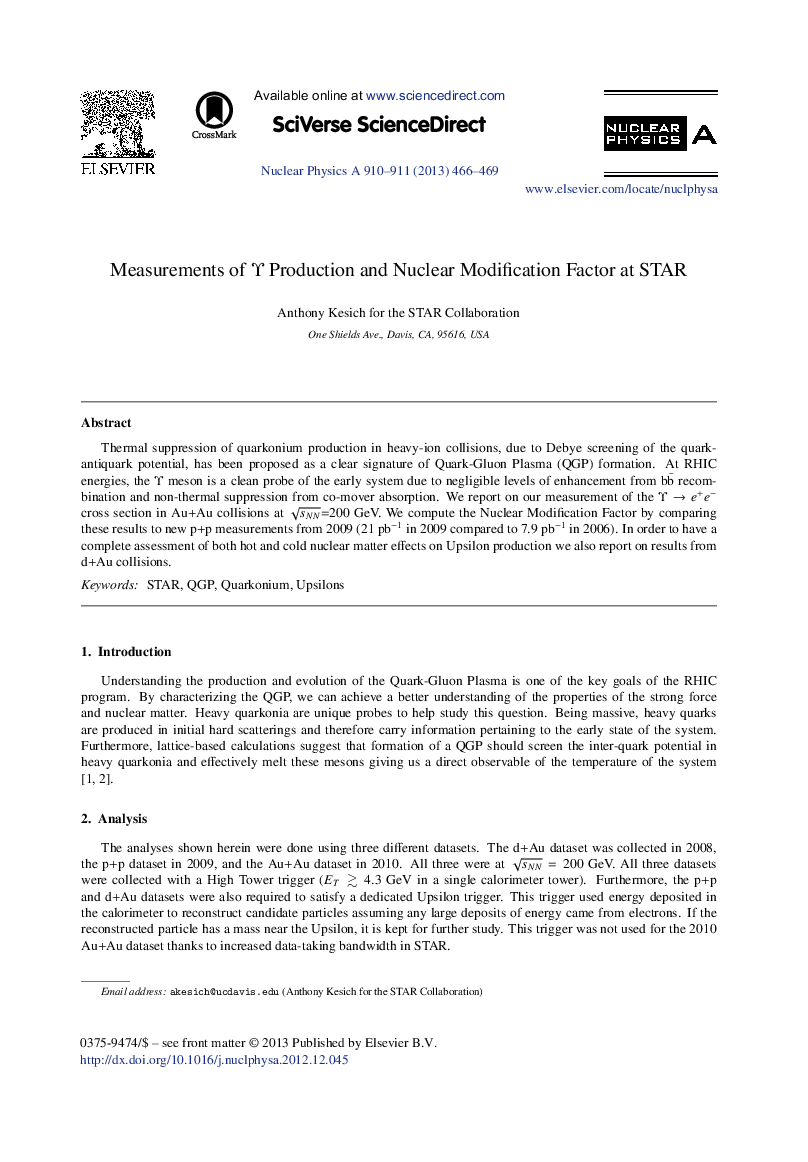| Article ID | Journal | Published Year | Pages | File Type |
|---|---|---|---|---|
| 8184351 | Nuclear Physics A | 2013 | 4 Pages |
Abstract
Thermal suppression of quarkonium production in heavy-ion collisions, due to Debye screening of the quark-antiquark potential, has been proposed as a clear signature of Quark-Gluon Plasma (QGP) formation. At RHIC energies, the Ï meson is a clean probe of the early system due to negligible levels of enhancement from bb¯ recombination and non-thermal suppression from co-mover absorption. We report on our measurement of the Ïâe+eâ cross section in Au+Au collisions at sNN=200 GeV. We compute the Nuclear Modification Factor by comparing these results to new p+p measurements from 2009 (21 pbâ1 in 2009 compared to 7.9 pbâ1 in 2006). In order to have a complete assessment of both hot and cold nuclear matter effects on Upsilon production we also report on results from d+Au collisions.
Keywords
Related Topics
Physical Sciences and Engineering
Physics and Astronomy
Nuclear and High Energy Physics
Authors
Anthony Kesich, STAR Collaboration STAR Collaboration,
